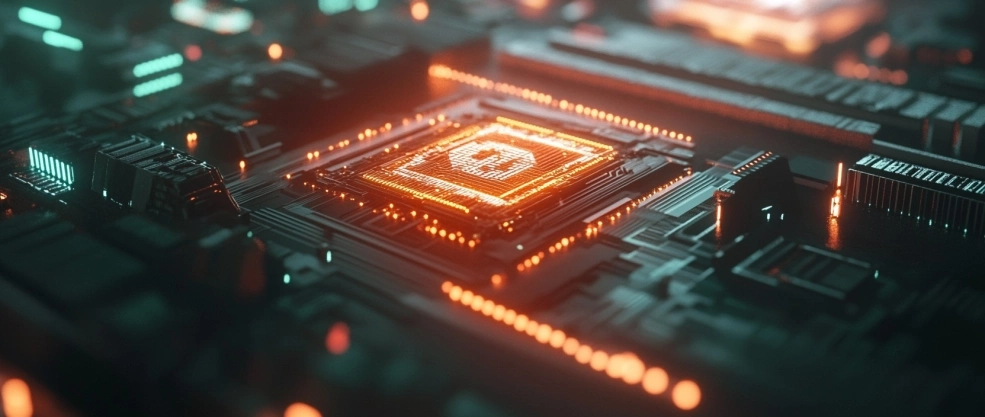Brevis Network is a platform focused on the development of decentralized applications and providing users with a secure and efficient environment for interacting with blockchain assets. Using smart contracts and automation mechanisms, the project aims to address key issues in the cryptocurrency and blockchain technology sectors. Built on blockchain, Brevis Network offers opportunities for creating NFTs and tokens, as well as using them for monetization and asset management across various applications.
- Overview of Brevis Network Project
- Technological Structure of the Project
- Use of NFTs and Tokens in the Brevis Network Ecosystem
- Advantages and Disadvantages of the Platform
- Conclusion
Overview of the Brevis Network Project
Brevis Network is a high-speed blockchain platform focused on creating decentralized applications that allow users and developers to interact with cryptocurrency assets. One of the key features of the project is that it offers not only tools for developing dApps, but also a wide range of tools for their deployment, as well as the use of smart contracts to automate various processes.
The platform is designed to enhance scalability, allowing Brevis Network to effectively handle a large number of transactions, avoiding delays and high costs. Unlike traditional solutions, it ensures fast and reliable data processing, which is crucial when developing large projects and integrating with other blockchains. Thus, Brevis Network is a promising ecosystem for those interested in creating decentralized applications, as well as for users who want to take full advantage of modern cryptocurrency technologies.
Moreover, the project emphasizes the security of all operations and the protection of user data, contributing to the creation of a reliable platform for working with digital assets. In this context, Brevis Network offers not only a stable but also a secure infrastructure for implementing the most ambitious ideas.
Technological Structure of the Project
Brevis Network is built on blockchain technology, which ensures the reliability and security of all operations within the ecosystem. A key component of the platform's structure is the consensus algorithm, which efficiently verifies and confirms transactions, minimizing the load on the network.
An important element in the platform's architecture is smart contracts. These contracts automate processes related to the transfer of digital assets, simplifying interaction between users. Smart contracts eliminate the need for intermediaries, which significantly reduces costs and speeds up transactions.
Furthermore, the platform's technology supports integration with other blockchains, providing flexibility and scalability to the network.
Technological Structure Components:
| Component | Description |
|---|---|
| Consensus Algorithm | Ensures fast transaction confirmation, minimizing network load. |
| Smart Contracts | Automates operations, ensuring smooth functioning without intermediaries. |
| Integration with Other Blockchains | Increases flexibility and scalability, allowing interaction with various systems. |
These key components provide Brevis Network with high speed and security. The platform easily integrates with other blockchains, making it convenient for developing various applications. Smart contracts significantly simplify the asset exchange process and business operations on the platform.
Use of NFTs and Tokens in the Brevis Network Ecosystem
NFTs and tokens play an important role in the Brevis Network ecosystem, providing users with unique opportunities for monetization. The use of NFTs allows the creation of unique digital assets such as collectibles, virtual objects, or artwork. These assets can be bought, sold, or exchanged.
Tokens on the platform serve various purposes, including participation in project governance and transaction fees. Users can create their own tokens, offering additional integration and monetization opportunities. Tokens and NFTs operate within a decentralized ecosystem, ensuring the security and transparency of all transactions.
Benefits of using NFTs and tokens:
- Asset monetization: the ability to earn from unique digital objects.
- Flexibility: the ability to create custom tokens for various purposes.
- Accessibility: providing new opportunities for users of all categories.
The use of NFTs and tokens helps create a richer and more diverse ecosystem where users can interact, earn, and grow their digital assets. This significantly expands the platform's capabilities and its participants.
Advantages and Disadvantages of the Platform
Brevis Network is a platform that attracts attention due to its key features. High transaction speed and low fees help users interact efficiently with the system. The platform uses smart contracts to automate processes, increasing security and reducing the need for intermediaries.
Advantages:
- High transaction speed and low fees.
- Automation of processes via smart contracts.
- Flexibility and integration with other blockchains.
However, despite these clear advantages, the project faces several challenges. The platform is still in active development, and its functionality is currently limited. In a highly competitive blockchain market, the project has a lot to do to improve its ecosystem.
Disadvantages:
- Limited functionality at the moment.
- The need for improvements and regular updates.
- High competition in the blockchain segment.
Nevertheless, Brevis Network continues to evolve, addressing current shortcomings and expanding its functionality. The platform has all the potential to scale successfully if it continues to strengthen its advantages and attract new users. Active improvements and new features make the project increasingly promising.
Conclusion
Brevis Network is a promising platform that has already proven itself with high potential and key features such as fast transaction speeds and automation through smart contracts. Despite some limitations, the project continues to actively develop and improve its functionality. In the future, with improved services and an increase in the user base, Brevis Network could become a leader in the blockchain technology market.





